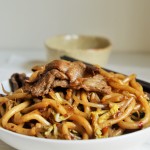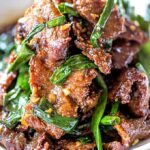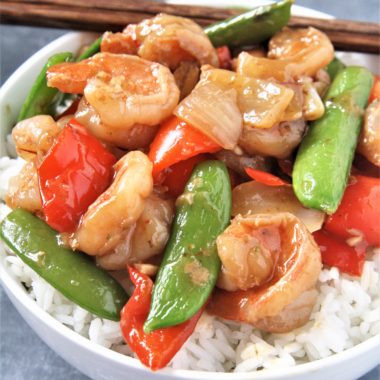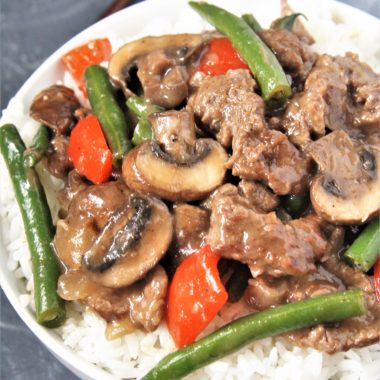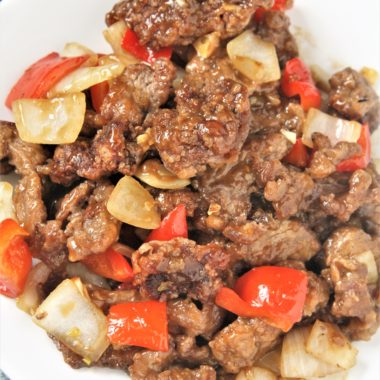Last Updated on February 9, 2025 by Karen
When it comes to iconic dishes from China that showcase the diversity of its regional cuisines, few dishes exemplify this more than Szechuan Beef and Hunan Beef.
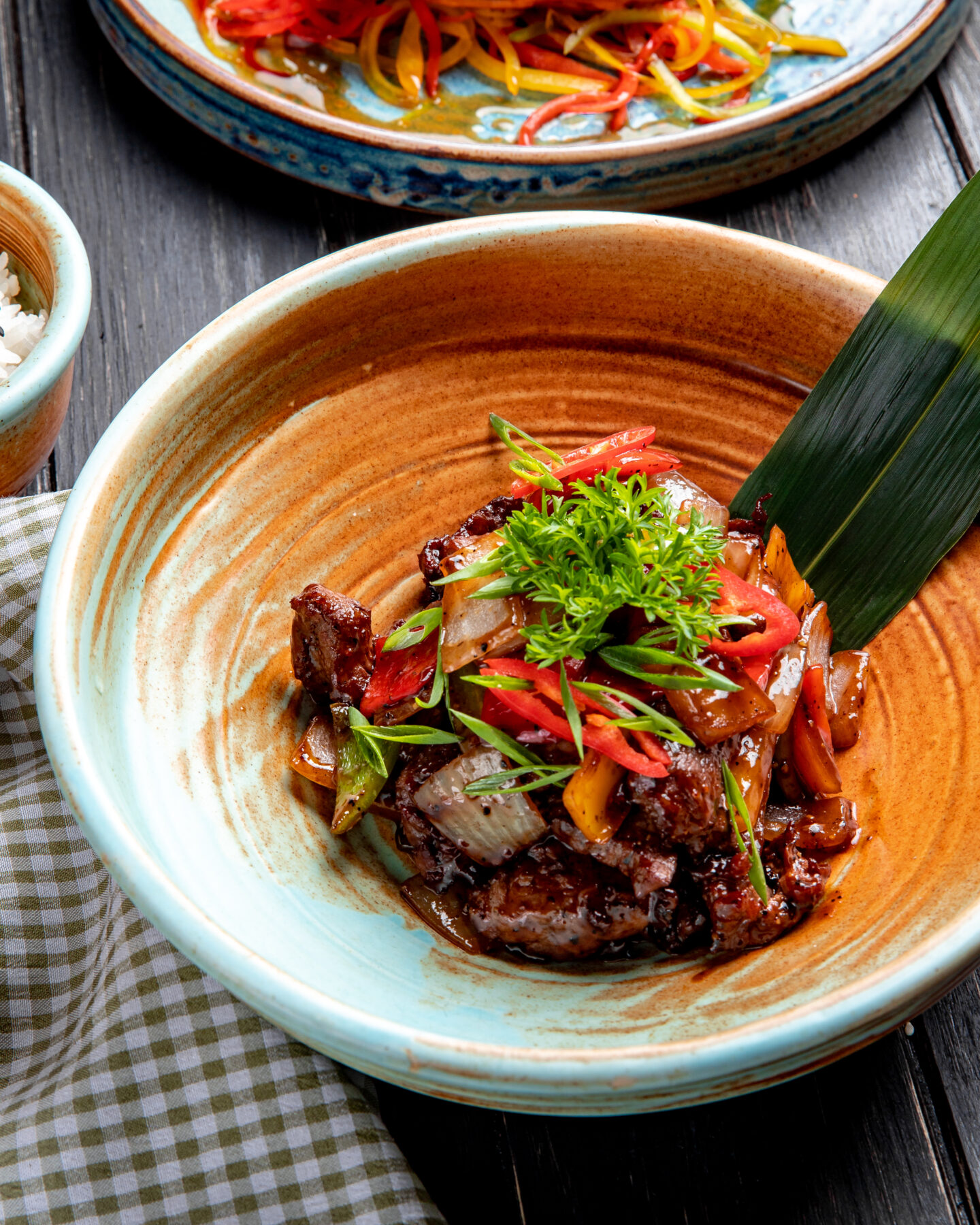
Chinese cuisine is renowned for its diverse regional dishes, with Szechuan and Hunan cuisines standing out prominently.
Szechuan cuisine, originating from southwestern China, is characterized by its bold flavors cooked in high heat and the unique numbing sensation from Sichuan peppercorns.
Hunan cuisine, on the other hand, from central China, features bold, savory flavors with a focus on spicy flavors from chili peppers. Both cuisines showcase the rich culinary traditions and agricultural diversity of their respective regions, offering a wide array of dishes that cater to varying taste preferences and spice tolerances.
Originating from the Sichuan and Hunan provinces respectively, these dishes – Szechuan Beef and Hunan Beef – are commonly found in Chinese restaurants all over the world. Each offers a unique blend of flavors and histories that make them standout favorites among Chinese food.
Other Chinese favorites you’ve love:
Panda Express Copycat Black Pepper Angus Steak
Quick and Easy Chicken Fried Rice
Panda Express Copycat Beijing Beef
What is Szechuan Beef?
Szechuan Beef, originating from the Sichuan province in southwestern China, is a popular dish known for its bold flavors and spicy profile.
Thinly sliced beef is typically stir-fried with a combination of main ingredients such as garlic, ginger, Sichuan peppercorns, dried red chili peppers, and sometimes black pepper. The dish is then coated in a savory sauce made from soy sauce, rice wine vinegar, sugar, and sometimes sesame oil.
Szechuan Beef is renowned for its numbing and tingling sensation from the Sichuan peppercorns (which is a main ingredient in this dish, and commonly used in Szechuan cuisine), adding a distinctive element to its fiery heat.
How is Szechuan Beef commonly served?
Szechuan beef is commonly served with steamed white rice and garnished with green onions or sesame seeds, making it a beloved dish in Chinese cuisine known for its complexity and intense flavors.

What is the origin of Szechuan Beef?
Szechuan Beef’s origins can be traced back to the Sichuan province, known for its rich culinary traditions dating back centuries. The dish’s signature flavors are derived from ingredients like Sichuan peppercorns (or Szechuan peppercorns), which impart a unique numbing sensation on the palate, as well as liberal use of chili peppers and garlic, which contribute to its spicy profile.
In Szechuan cuisine, the preference for numbing peppercorns, even in hot temperatures, stems from several factors deeply rooted in local culture and culinary practices.
First, the numbing sensation provided by Szechuan peppercorns is believed to have a cooling effect on the body, making spicy foods more tolerable in hot climates. This unique sensation not only enhances the dining experience by offering a contrast to the heat but also encourages people to eat more, as it can stimulate appetite in warm weather.
In addition, Szechuan cuisine’s incorporation of spicy and numbing flavors reflects a cultural appreciation for bold, complex tastes that have become synonymous with the region’s culinary identity. Therefore, despite the heat, Szechuan people continue to enjoy dishes seasoned with numbing peppercorns as a testament to their rich culinary heritage and unique flavor preferences.
What dishes other than Szechuan Beef use Szechuan peppercorn?
The use of Szechuan peppercorns is common in Sichuan cuisine, such as in Szechuan chicken and Szechuan boiled fish, Szechuan style mapo tofu, and hot pot (Chinese fondue).
Most Asian grocery stores in the U.S. sell whole Szechuan peppercorns or Szechuan chili sauce or oil infused with the peppercorn.
How do you make Szechuan Beef?
Most Szechuan Beef recipe calls for thin slices of beef are marinated in soy sauce, Shaoxing wine, and cornstarch, imparting tenderness and flavor. In a hot skillet or wok, the tender slices of beef is quickly stir-fried with sizzling hot vegetable oil until browned and cooked through. Fresh ingredients such as garlic, ginger, green onions, and red bell peppers are then added, infusing the dish with aromatic notes and vibrant colors.
The key to the distinctive taste of dish dish lies in the flavorful sauce—a blend of light and dark soy sauce, hoisin sauce, rice vinegar, sugar, and Szechuan chili paste or chili oil, delivering a spicy kick and depth of flavor. A final touch of sesame oil and a corn starch slurry thickens the sauce, coating the beef and vegetables in a glossy, savory glaze.
Szechuan Beef is typically served hot and paired with steamed rice or noodles (to soak up that spicy sauce), offering a satisfying meal that’s both bold and comforting, perfect for lovers of spicy cuisine.
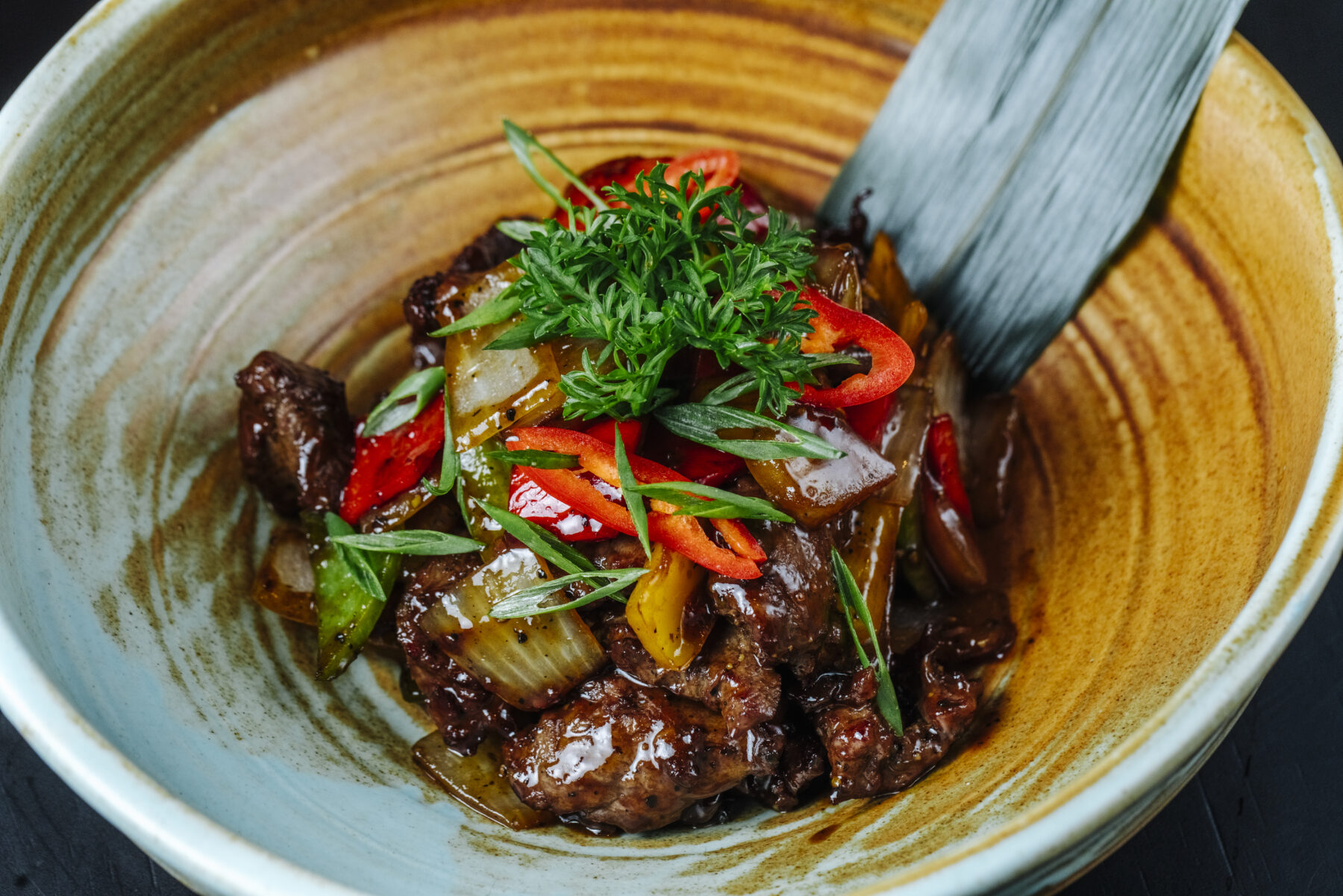
What is Hunan Beef?
Hunan Beef is a savory and spicy dish originating from China’s Hunan province, known for its bold flavors and generous use of chili peppers.
Most Hunan Beef recipe calls for thin slices of beef are typically stir-fried with a variety of vegetables such as fresh peppers, onions, and sometimes bamboo shoots. The dish is seasoned with garlic, ginger, and chili peppers, imparting a robust and spicy profile. A savory sauce made from soy sauce, rice wine vinegar, sugar, and often chili paste or bean paste adds depth and umami to the dish.
Authentic Hunan Beef usually incorporates fermented black beans for its hearty flavors, contrasting heat from the chili peppers, and the satisfying interplay of savory and spicy elements.
How is Hunan Beef commonly served?
Hunan beef is commonly served hot with steamed rice, showcasing the rich culinary tradition and agricultural diversity of the Hunan province. Hunan food is not commonly known to be overly spicy, and the level of spiciness in Hunan style cooking can be adjusted based on personal preference.
What is the origin of Hunan Beef?
Hunan Beef finds its roots in the Hunan province, where local chefs have perfected the art of balancing flavors and textures in their dishes. The cuisine of Hunan is celebrated for its emphasis on spiciness, as well as the use of ingredients like garlic, shallots, and fermented soybeans to create robust and aromatic dishes.
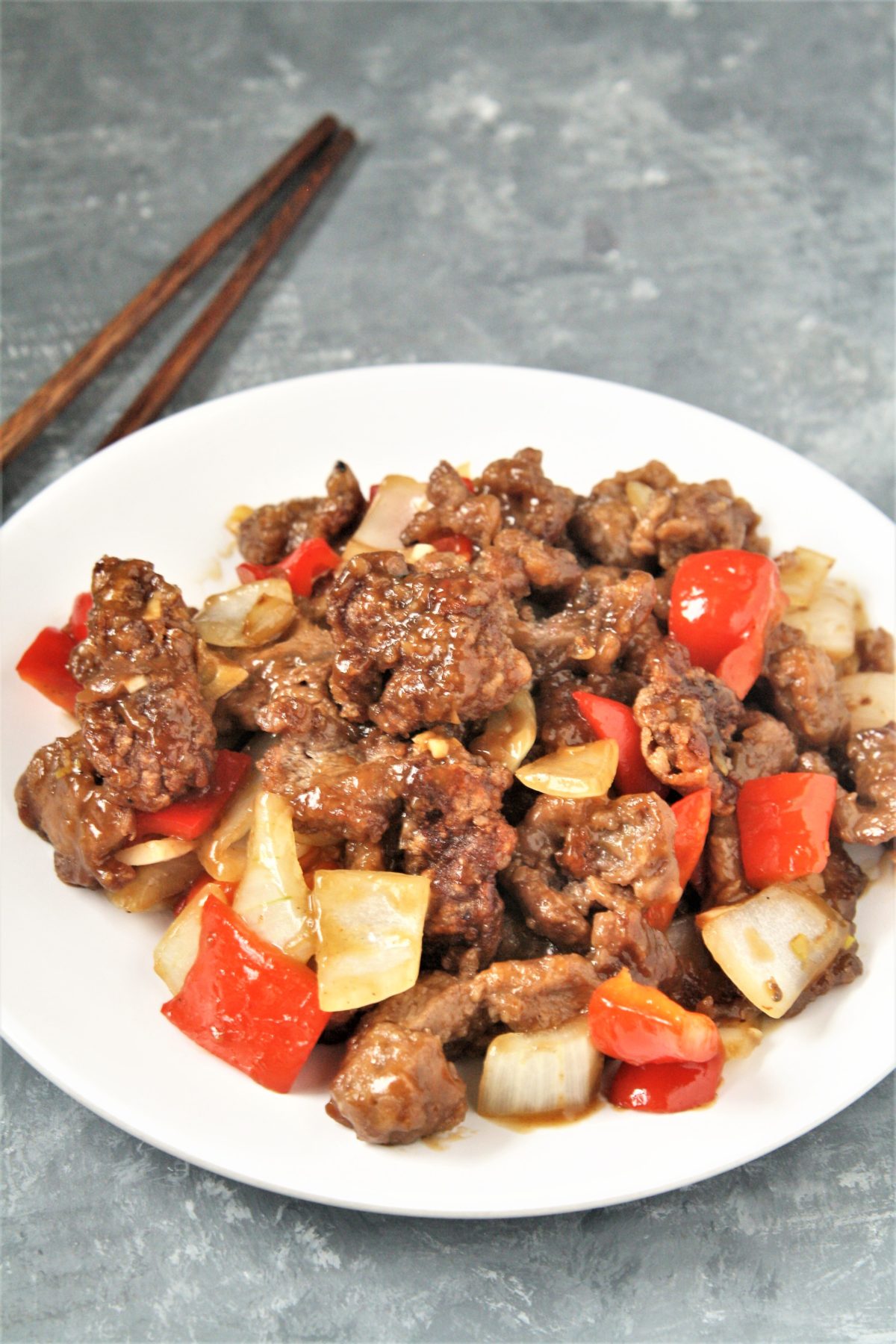
What is fermented black beans (fermented soybeans)?
Fermented black beans, also known as Douchi (豆豉) in Chinese, are a traditional ingredient used in Chinese cooking. They are made from soybeans that have been fermented and preserved in salt. The fermentation process gives the beans a savory, salty, and slightly tangy flavor, along with a distinctive aroma.
To make fermented black beans, soybeans are first cooked until soft, then mixed with salt and fermented for several weeks to several months. During fermentation, beneficial microorganisms break down the beans’ proteins and starches, resulting in a complex umami flavor.
In Hunan cuisine, fermented black beans are often used as a seasoning or condiment to add depth and richness to dishes. They are commonly used in stir-fries, sauces, marinades, and soups, where their intense flavor complements ingredients like garlic, ginger, and chili peppers.
Additionally, they are sometimes mashed or minced before being added to dishes, releasing their flavor more evenly throughout the food.
Is there a substitute for fermented black beans?
If you can’t find fermented black beans at the grocery store, miso paste, especially the darker varieties like red miso, can be used as a substitute. Miso also undergoes fermentation and provides a salty, umami-rich flavor that can complement Chinese dishes well.
Black bean sauce (such as the Lee Kum Kee brand version) is a readily available alternative that often contains fermented black beans blended into a sauce with garlic, soy sauce, and sometimes sugar or other seasonings. It provides a similar salty and savory flavor to dishes.
How do you make Hunan Beef?
To prepare Hunan Beef, thinly sliced beef is typically stir-fried with a medley of fresh vegetables such as bell peppers, onions, and sometimes bamboo shoots. The dish is seasoned with garlic, ginger, and chili peppers, which lend it a spicy kick. A sauce made from soy sauce, oyster sauce, rice wine vinegar, white or brown sugar, and chili paste or bean paste (fermented black beans that have been processed into paste form) adds depth and umami to the dish.
Hunan Beef is appreciated for its hearty flavors and the contrast between the heat of the chili peppers and the savory umami of the sauce.
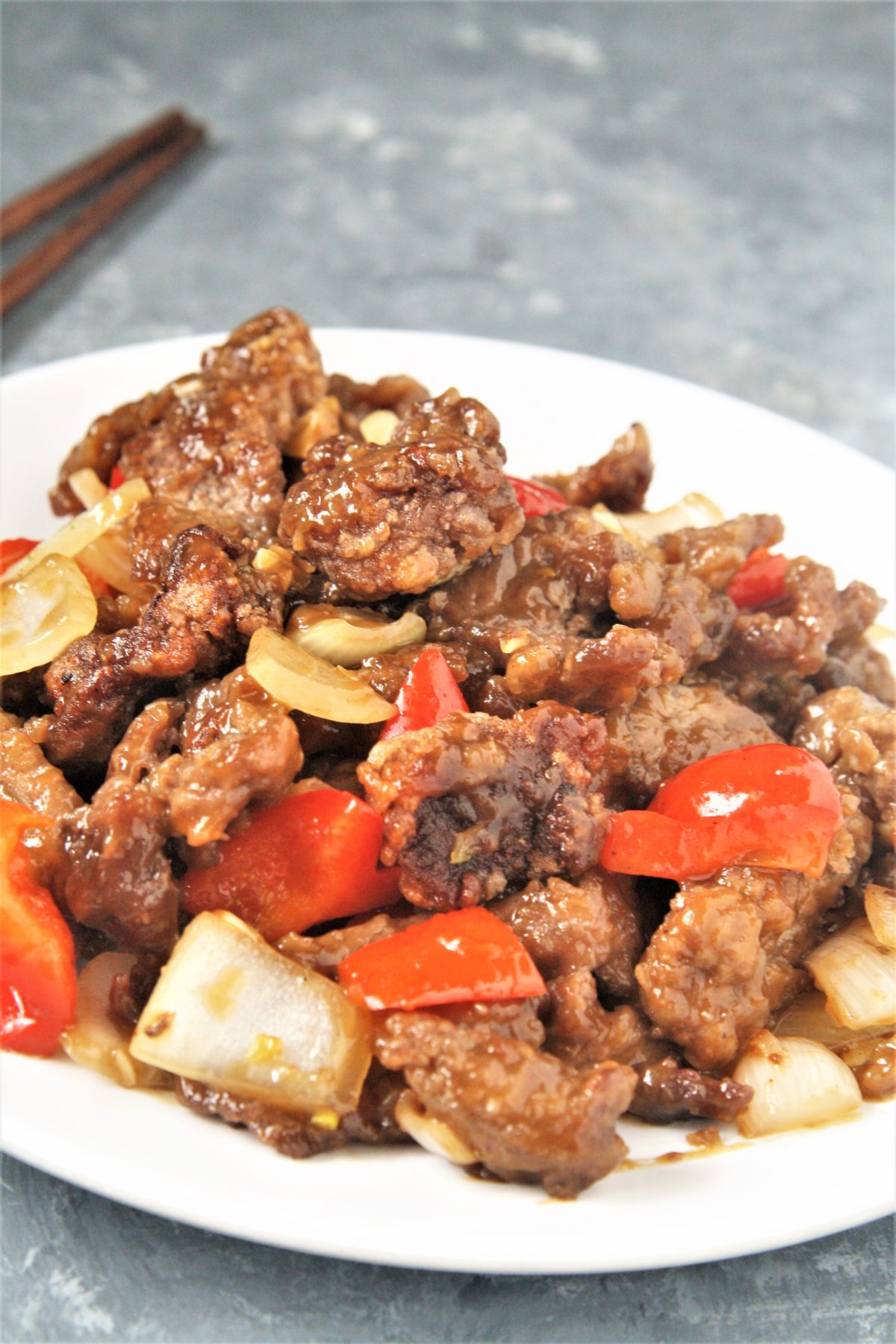
Main difference between Szechuan Beef v. Hunan Beef: Which is the better dish?
Base Flavor Profile: Szechuan Beef is known for its intense spiciness and numbing sensation from Sichuan peppercorns (very intense heat), while Hunan Beef offers a robust, savory, and slightly sour unique flavor profile with a focus on chili peppers and fermented soybeans.
Spice Level: Szechuan Beef is typically hotter and spicier compared to Hunan Beef, which incorporates chili peppers for flavor without the numbing sensation. I would say if you can tolerate mildly spicy food, Hunan Beef is a better choice since Hunan sauce has less heat.
Key Ingredients: Szechuan Beef prominently features Sichuan peppercorns and dried chili peppers, whereas Hunan Beef utilizes fresh chili peppers, garlic, and fermented black beans (fermented soybeans) for its distinctive flavor.
Cooking Methods: The cooking methods of Szechuan beef is pretty similar to Hunan beef. The cooking techniques involve searing the beef in a large skillet, then adding in aromatics, and preparing the sauce.
Cultural Context: Szechuan Beef reflects the bold and spicy culinary traditions of the Sichuan province, while Hunan Beef highlights the agricultural abundance and culinary creativity of the Hunan province.
When it comes to determining which dish is better, the answer largely depends on personal preference for spice tolerance and flavor profiles.
If you enjoy bold, numbing spiciness, Szechuan Beef might be your preferred choice. On the other hand, if you prefer robust savory flavors with a kick of heat, Hunan Beef could be more to your liking. Both dishes showcase the richness and diversity of Chinese cuisine, offering a delightful exploration of regional flavors and culinary traditions.
I personally love Szechuan Beef because there is nothing like the flavor from Szechuan peppercorn!
Is Szechuan sauce vegan?
Szechuan sauce, traditionally known for its bold and spicy flavor, can vary in its ingredients depending on the recipe or brand. While some versions are vegan, I’ve seen some storebought sauces that contain non-vegan ingredients like oyster sauce, fish sauce, or honey.
To determine if a specific Szechuan sauce is vegan, it’s important to check the ingredient list. Many store-bought options might contain these animal-based ingredients, but there are also vegan-friendly versions available or recipes you can make at home using alternatives like soy sauce, hoisin sauce, and vegan-friendly sweeteners.
If you’re dining at a restaurant or ordering takeout, it’s always a good idea to ask about the sauce’s ingredients to confirm if it meets vegan standards.
What is a good Szechuan Beef recipe?
Here’s a delicious Szechuan Beef recipe you can try at home. It’s spicy, savory, and perfect if you love bold flavors!
Ingredients:
For the Beef:
- 1 lb (450g) flank steak, thinly sliced against the grain
- 2 tbsp soy sauce
- 1 tbsp cornstarch
- 1 tsp sesame oil
- 1/2 tsp black pepper
- 1 tbsp vegetable oil (for frying)
For the Szechuan Sauce:
- 3 tbsp soy sauce
- 1 tbsp rice vinegar
- 2 tbsp hoisin sauce
- 1 tbsp chili paste or Szechuan chili sauce (adjust to your spice preference)
- 1 tbsp brown sugar
- 1 tbsp cornstarch mixed with 2 tbsp water (cornstarch slurry)
- 1/2 tsp ground Szechuan peppercorns
- 2 garlic cloves, minced
- 1-inch piece of ginger, minced
- 1/4 cup chicken or vegetable broth
- 1 tbsp vegetable oil (for sauce)
For Garnish:
- Green onions, chopped
- Red chili flakes (optional, for extra heat)
Instructions:
- In a bowl, combine the thinly sliced flank steak, soy sauce, cornstarch, sesame oil, and black pepper. Toss the beef until evenly coated and let it marinate for 15-20 minutes. This will help tenderize the beef and allow the flavors to absorb.
- To make the Szechuan sauce, whisk together the soy sauce, rice vinegar, hoisin sauce, chili paste, brown sugar, cornstarch slurry, and ground Szechuan peppercorns in a bowl. Set this mixture aside.
- Heat 1 tbsp of vegetable oil in a large skillet or wok over medium-high heat. Once hot, add the marinated beef in a single layer and sear until browned on both sides, about 2-3 minutes per side. Don’t overcrowd the pan; cook the beef in batches if necessary. Once cooked, remove the beef from the pan and set aside.
- In the same skillet, add another 1 tbsp of vegetable oil. Toss in the minced garlic and ginger, stirring for about 30 seconds until fragrant. Add the Szechuan sauce mixture to the pan. Bring it to a simmer and let it cook for 2-3 minutes until the sauce thickens.
- Add the cooked beef back to the skillet and toss it with the sauce until well-coated and heated through. Cook for an additional minute, allowing the beef to absorb the sauce.
- Transfer the Szechuan beef to a serving dish. Garnish with chopped green onions and red chili flakes if you like it extra spicy. Serve over steamed rice or with sautéed vegetables.
Tips:
- Adjust Spice Level: If you like your Szechuan beef extra spicy, increase the amount of chili paste or add fresh sliced chilies.
- Customize Vegetables: You can add bell peppers, onions, or broccoli to the dish to make it more hearty.
- Protein Swap: Feel free to swap the beef for chicken, tofu, or another protein if preferred.
Enjoy this flavorful Szechuan Beef packed with heat and delicious umami!

